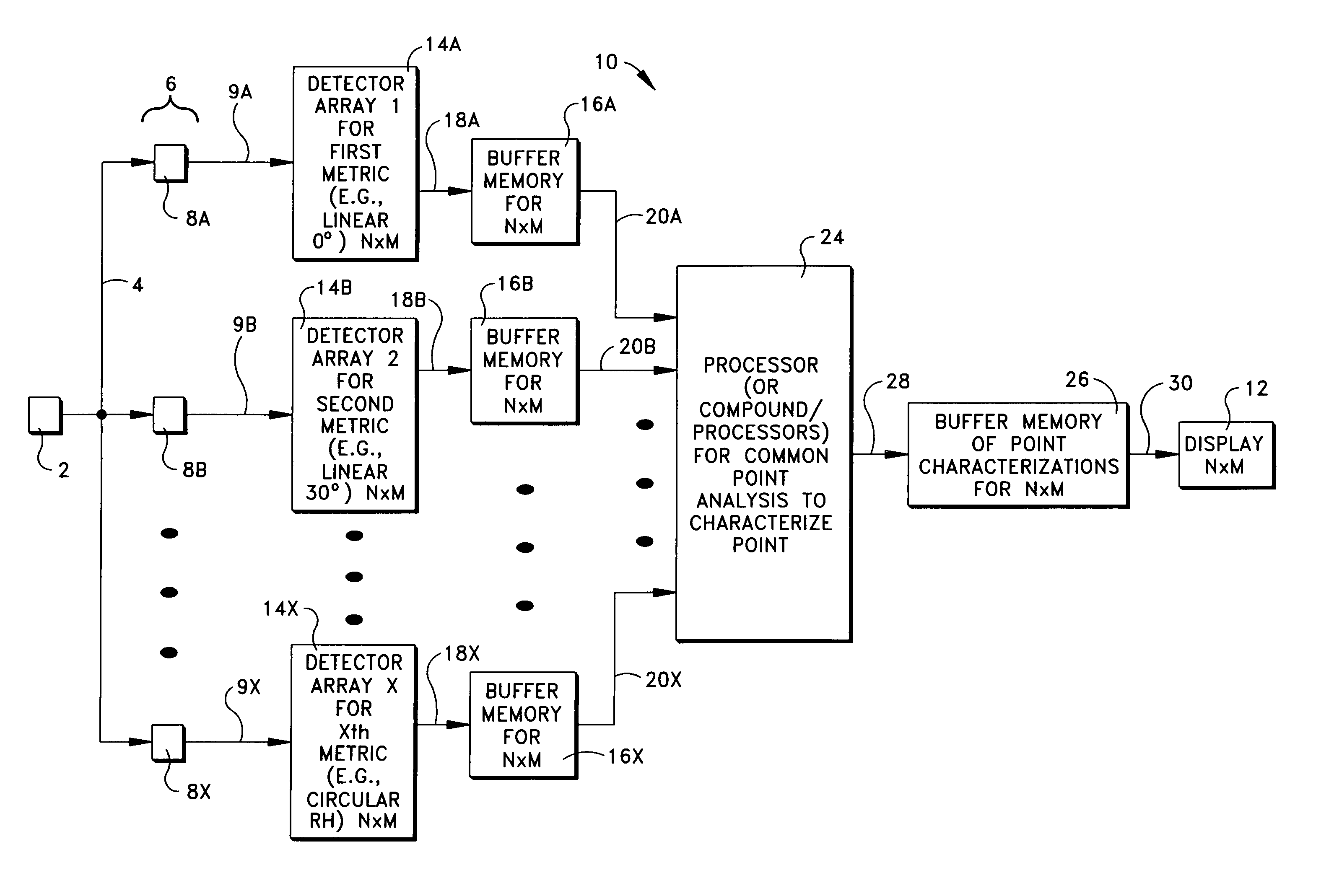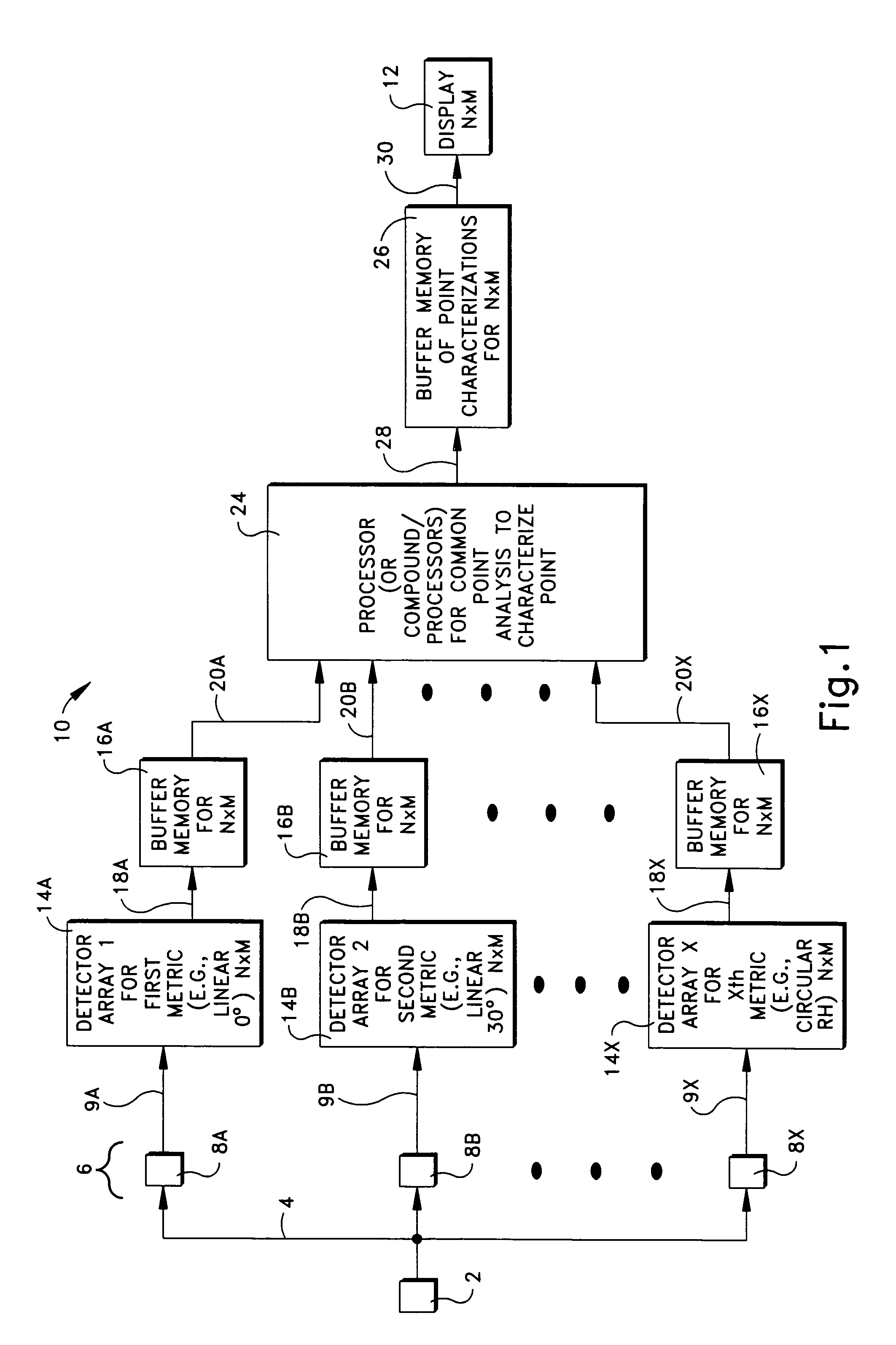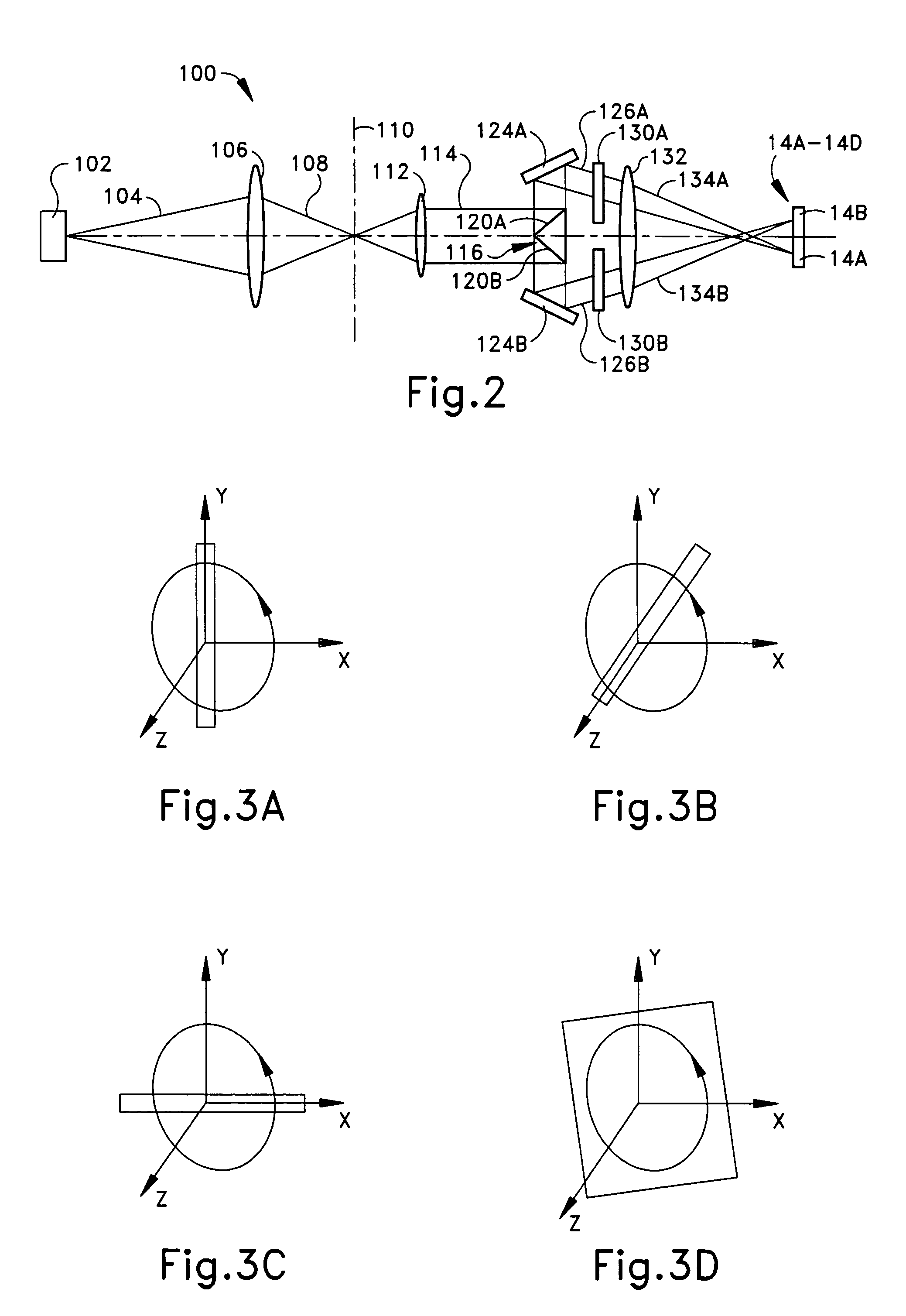Apparatus and method of information extraction from electromagnetic energy based upon multi-characteristic spatial geometry processing
a technology of electromagnetic energy and information extraction, applied in the field of apparatus and method of information extraction from electromagnetic energy based upon multi-characteristic spatial geometry processing, can solve the problems of inability to maintain two-dimensional spatial integrity of source objects, inability of spectrometers to determine spectral content pixel-by-pixel, and certain limitations imposed by the geometry of these systems
- Summary
- Abstract
- Description
- Claims
- Application Information
AI Technical Summary
Benefits of technology
Problems solved by technology
Method used
Image
Examples
Embodiment Construction
[0040]As light propagates and interacts with a surface of an object, the light will be absorbed, reflected, transmitted or emitted back off the surface. It has been appreciated by the inventor that the properties of the light proceeding from the surface contain all the characteristics regarding that object (surface). The characteristics include the object material type, molecular structure (which is a huge factor in what is absorbed and reflected), structure of the molecular elements, orientation of the surface, spectral content, intensity (which is changed by amounts of absorption and reflection), and of coarse polarization of the reflected or emitted light. Within some of the inventor's previous work (see U.S. Pat. No. 5,890,095) there was attention given to benefits which could be developed directly from the classical polarization elements, which only deals with the reflected and emitted components of the light and only deals with the orthogonal s- and p-polarizations. The presen...
PUM
 Login to View More
Login to View More Abstract
Description
Claims
Application Information
 Login to View More
Login to View More - R&D
- Intellectual Property
- Life Sciences
- Materials
- Tech Scout
- Unparalleled Data Quality
- Higher Quality Content
- 60% Fewer Hallucinations
Browse by: Latest US Patents, China's latest patents, Technical Efficacy Thesaurus, Application Domain, Technology Topic, Popular Technical Reports.
© 2025 PatSnap. All rights reserved.Legal|Privacy policy|Modern Slavery Act Transparency Statement|Sitemap|About US| Contact US: help@patsnap.com



